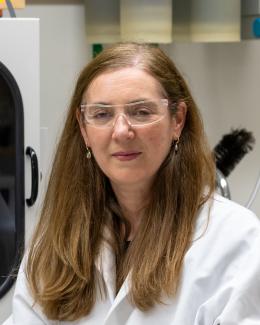Abstract
Targeted alpha therapy (TAT) relies on chemical affinity or active targeting using radioimmunoconjugates as strategies to deliver α-emitting radionuclides to cancerous tissue. These strategies can be affected by transmetalation of the parent radionuclide by competing ions in vivo and the bond-breaking recoil energy of decay daughters. The retention of α-emitting radionuclides and the dose delivered to cancer cells are influenced by these processes. Encapsulating α-emitting radionuclides within nanoparticles can help overcome many of these challenges. Poly(lactic-co-glycolic acid) (PLGA) nanoparticles are a biodegradable and biocompatible delivery platform that has been used for drug delivery. In this study, PLGA nanoparticles are utilized for encapsulation and retention of actinium-225 ([225Ac]Ac3+). Encapsulation of [225Ac]Ac3+ within PLGA nanoparticles (Zave = 155.3 nm) was achieved by adapting a double-emulsion solvent evaporation method. The encapsulation efficiency was affected by both the solvent conditions and the chelation of [225Ac]Ac3+. Chelation of [225Ac]Ac3+ to a lipophilic 2,9-bis-lactam-1,10-phenanthroline ligand ([225Ac]AcBLPhen) significantly decreased its release (< 2%) and that of its decay daughters (< 50%) from PLGA nanoparticles. PLGA nanoparticles encapsulating [225Ac]AcBLPhen significantly increased the delivery of [225Ac]Ac3+ to murine (E0771) and human (MCF-7 and MDA-MB-231) breast cancer cells with a concomitant increase in cell death over free [225Ac]Ac3+ in solution. These results demonstrate that PLGA nanoparticles have potential as radionuclide delivery platforms for TAT to advance precision radiotherapy for cancer. In addition, this technology offers an alternative use for ligands with poor aqueous solubility, low stability, or low affinity, allowing them to be repurposed for TAT by encapsulation within PLGA nanoparticles.







